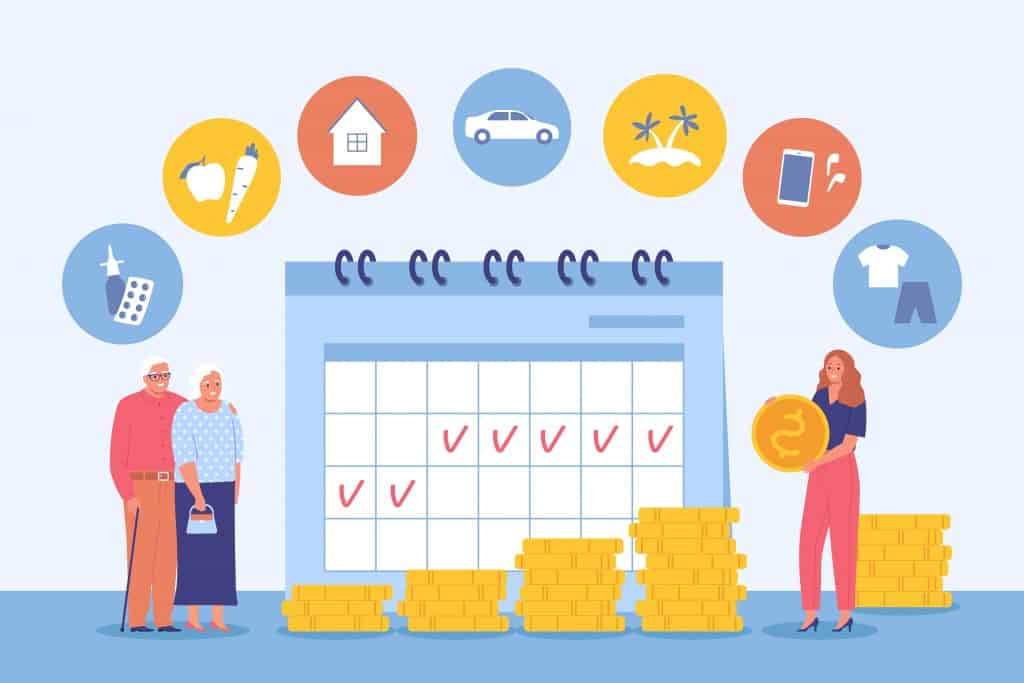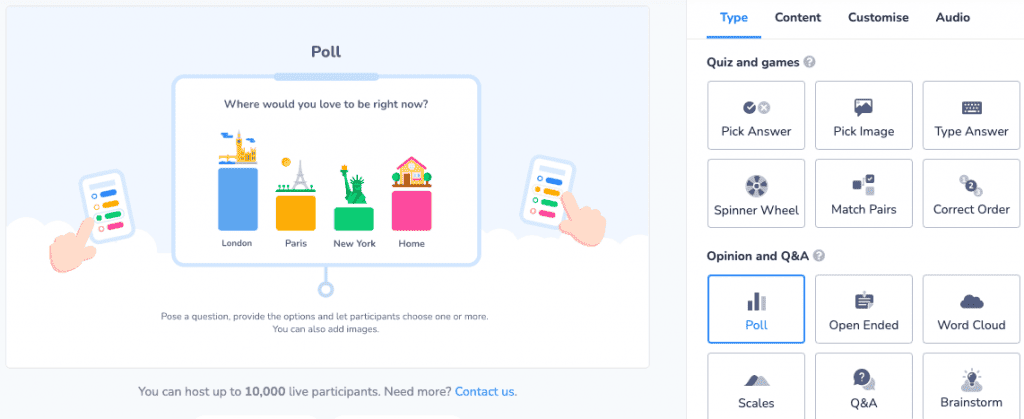So, when should we start calculating annual leave? No matter how much we love our jobs, taking time off is essential to our overall health and productivity. Do you know that employees who take annual leave are 40% more productive and creative, happier, and have a better memory than those who do not? With summer just approaching, it’s a great time to start planning your annual leave.
However, calculating how much leave you’re entitled to and how to use it effectively can be not very clear. In this post, we’ll provide a step-by-step guide to calculating annual leave and offer some tips for employers to create a survey on the annual leave policy at work.
So let’s get started!

More Work Tips with AhaSlides

Engage with your employees.
Instead of a boring orientation, let's start a fun quiz to refresh new day. Sign up for free and take what you want from the template library!
🚀 To the clouds ☁️
What Is Annual Leave?
Annual leave is a paid time off granted to employees by their employer. It is usually accrued based on employee time worked, and the goal is to provide time off work and allow employees to rest, recharge, or do whatever they like.
Annual leave is a valuable benefit that helps employees maintain a healthy work-life balance, reduce stress, and improve overall health. Therefore, it is usually taken in blocks of days or weeks with the number of annual leave days depending on the employment contract, company policy, and local or national employment laws.
What Is An Annual Leave Policy?
As mentioned above, an annual leave policy can vary depending on many factors. But in general, most companies have a policy that states:
- The number of days of annual leaves the employee is entitled to;
- Details about accumulating leave days, as well as any limits or limitations on their use;
- Information on requesting and approving annual leave (Example: How far in advance employees must ask it, and whether any unused leave can be carried over to the following year or paid out.)
Additionally, the policy may specify any blackout periods during which annual leave cannot be taken, such as busy periods or company events, and any requirements for employees to coordinate their leave schedules with their team or department.
Employees must review their company’s annual leave policy to understand their entitlements and any rules or procedures they must follow when taking time off.

What’s The Difference In Annual Leave Between Countries?
The amount of annual leave employees are entitled to can vary considerably between countries, depending on local labor laws and cultural norms.
For example, in most European countries, employees are entitled to a minimum of 20 paid annual leave per year, as required by the European Union’s Working Time Directive.
In Southeast Asia, annual leave benefits vary widely from country to country. In Vietnam, you can take 12 days off annually, with an additional paid holiday every five years you work for the same employer. In Malaysia, you earn eight days of paid leave if you’ve been with the company for two years.
Employees understanding the annual leave benefits in their country can help them make informed decisions about work-life balance. And these differences can also help organizations attract and retain talent by offering competitive benefits packages.
You can learn more about paid annual leave per country here.
Challenges Of Annual Leave Management
While annual leave is a crucial benefit that helps employees maintain a healthy work-life balance and improve their overall well-being, some problems can be associated with it. Some of the most typical challenges with calculating annual leave are as follows:
- Approval Process: Requesting and approving annual leave can be time-consuming, particularly if numerous employees ask for absence at the same time. This can lead to conflicts among employees or between employees and management and delays or disruptions in work schedules.
- Accrual and Carryover: Depending on the employer’s policy, calculating annual leave may accrue over time or be granted all at once. Furthermore, if annual leave cannot be carried over to the following year, employees may feel pressured to take time off even if they do not want or need it.
- Workload: Employees taking annual leave can create an additional workload for other team members. This is especially difficult when numerous employees are on break simultaneously or when an employee with specialized skills or knowledge is absent. Therefore, management levels must pay close attention to this point to arrange the workforce reasonably.
While annual leave is essential, companies must be aware of these possible challenges and have procedures and policies to overcome them. Employers can help ensure their employees can take advantage of this benefit while maintaining a productive and efficient workforce.

Can Employees Cash Out Their Annual Leave?
In many countries, annual leave is a benefit that provides employees with time off work rather than a form of compensation that can be converted into cash. However, some countries allow employees to receive cash payments instead of taking annual leave.
Therefore, the rules around cashing out annual leave can vary depending on the specific country and the employer’s policy.
So, employers and employees must be aware of the rules and regulations regarding cashing out annual leave in their own country, as this can impact their overall benefits package.
6 Steps To Create A Survey On Calculating Annual Leave Policy At Work
Creating a survey on the annual leave policy at work is a proactive way to gather employee feedback, identify improvement areas, and make informed decisions about potential changes. Here is some guidance to create a survey:
1/ Review the current policy
Before making any changes, please review the current annual leave policy to understand its strengths and weaknesses. Identify any areas that need improvement or new rules for calculating annual leave.
2/ Determine the objectives of the survey
What do you want to achieve by conducting the survey? Are you looking to gather feedback on the current annual leave policy, or are you exploring possibly implementing a new one? Understanding your objectives will help you design a more effective survey.
3/ Identify the target audience
Who will participate in the survey? Will it be available to all employees or a specific group (for example, full-time employees, part-time employees, and managers)? Understanding your intended audience will help you tailor the questions appropriately.

4/ Design the survey questions:
What do you want to ask about? Some possible questions are:
- How much annual leave do you receive per year?
- Do you feel that the current yearly leave policy meets your needs?
- Have you ever had difficulty scheduling or taking your annual leave?
- …
In addition to multiple-choice or rating scale questions, you may want to include some open-ended questions that allow employees to provide more detailed feedback or suggestions.
5/ Test the survey:
Before sending the survey to your employees, test it with a small group to ensure the questions are clear and easy to understand. This will assist you in identifying any difficulties or confusion before distributing the survey to a larger audience.
6/ Analyze the results:
Review the survey responses and identify any trends or patterns that emerge. Use this information to inform decisions about the annual leave policy.
Choose The Right Tool To Create The Survey
AhaSlides is a user-friendly survey tool that can help you gather valuable feedback from employees about your company’s annual leave policy with the following benefits:
- Ease of use: AhaSlides is user-friendly and intuitive, making it easy to create surveys without experience in survey design.
- Customizable: By offering many customization options, you can personalize the survey to your company’s needs with premade templates. Also, you can add more question types with live polls or create a Q&A session.
- Real-time results: AhaSlides provides real-time reporting of polling results, allowing you to see responses as they arrive. This can help you identify trends and patterns in your data and make informed decisions based on the feedback you receive.
- Accessibility: AhaSlides is a web-based platform. Employees can access the survey from their computer or mobile device with just a link or QR code without additional software or applications.

Key Takeaways
So, calculating annual leave? Not that difficult! In summary, calculating annual leave is an important aspect that employees and employers must thoroughly understand. By understanding annual leave policies and regulations, employers can ensure that they meet legal requirements and promote a healthy work-life balance for their employees.




